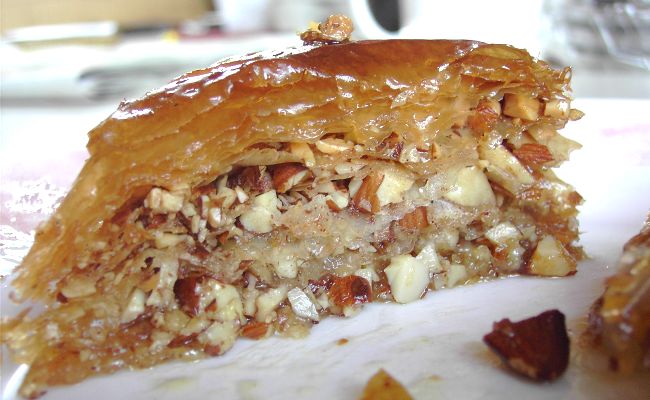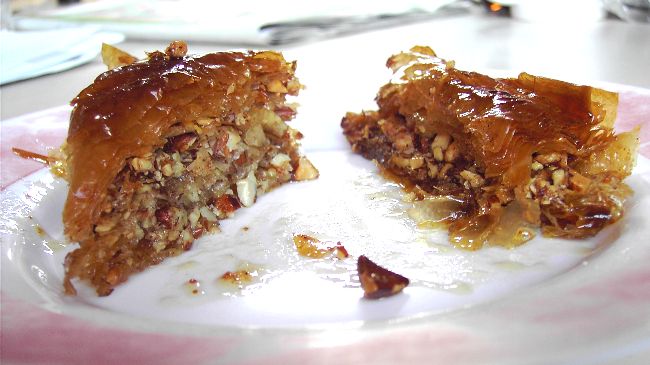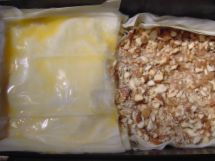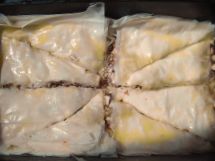
Baklava is a sweet Middle-Eastern dessert that is associated with a long and tedious assembly process. According to Seasoned Advice user Trey Jackson there is a faster way that is equally good.
I’ve been meaning to make baklava for the first time and I was curious to find out if this alternative method really did yield good results. To that end I made some baklava following the more traditional method and made some more, using Trey Jackson’s fast style. I used this recipe as a base for both.
Half of my baking dish was layered with phyllo dough, with layers of melted butter and cinnamoned chopped almonds inbetween. The other half had a stack of phyllo dough sheets, a thick layer of nuts and another pack of phyllo dough, with melted butter poured over (as Tray Jackson advises).
Directly after assembling, you could see that the traditional one is higher, while I used the same amount of phyllo dough and nuts for both. Fresh out of the oven, the height difference was less, but still there. After pouring the syrup on top and letting the baklava cool, the height difference was bigger again. Now, more importantly: the taste test. Is the time-consuming job superfluous or necessary?
Since I used the same ingredients, the taste was very similar. The mouthfeel however, wasn’t. The top layers of the ‘fast’ baklava didn’t feel like individual sheets, more like a thick caked-together piece of dough which led to not as much crunch. This also made the baklava less steady and more likely to fall apart. Needless to say, this also contributed to the fact that it didn’t look as good as the traditional one.

Original recipe to the left, filling-in-the-middle to the right.
However, the assembling of the fast baklava was very rapid (it took me perhaps 2 minutes, if even that) and tasted certainly not bad, while the traditional method indeed asked quite some time but was great. I believe the time-enjoyment trade-off is an individual one. I wouldn’t make the fast baklava when having guests over, but I might do it when feeling lazy and just making it for me. It’s certainly better than no baklava.
Filed under baking desserts experiments






I really enjoyed being a taster for this little experiment. The baklava made with the traditional recipe was delicious!
Feel free to make a cooking blog post yourself! I volunteer for the taste test (although I’m not sure whether that’s a smart move).
Well played!
Thanks! And I’m glad you take it nicely, I really didn’t want to attack you or your method.
This is reminiscent of an imitation strudel recipe my cousin was raving about, which involves dumping ingredients in a pan – it doesn’t look anything like strudel, but it sure tastes like it. Of course, it calls for strudel flour, which pretty much puts a damper on trying it out here in the states… though maybe I’ll try it one day with a combination of regular flour and wheat farina.